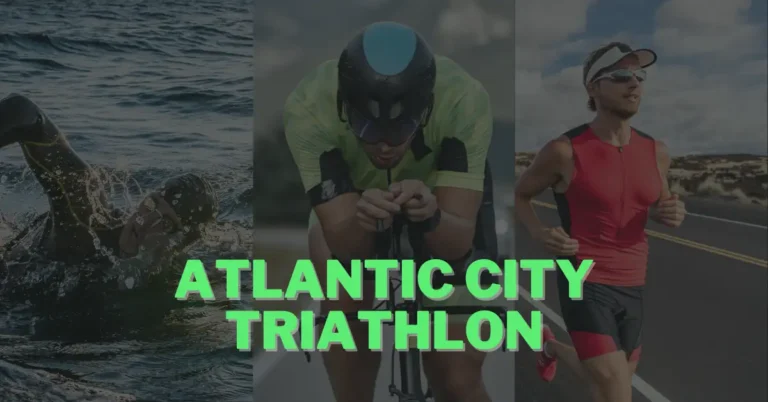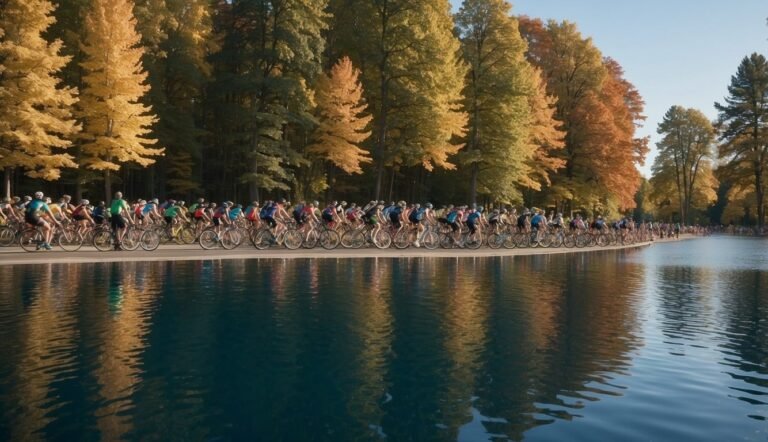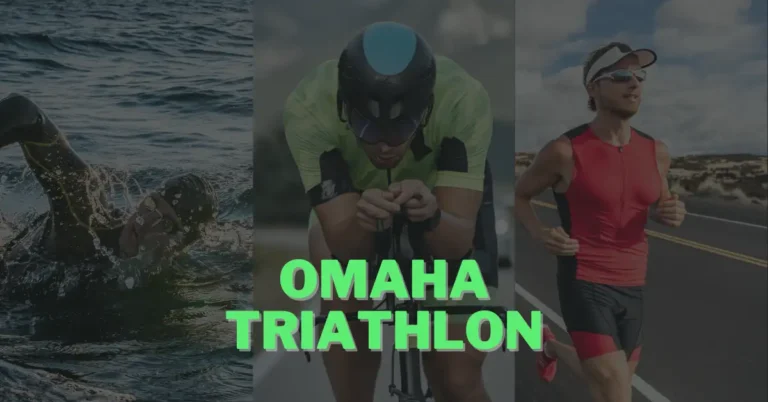📦 FREE Shipping
What is a Good Time for a Sprint Triathlon in 2024?

Participating in a sprint triathlon is an exhilarating challenge that attracts a diverse community of athletes. You might wonder: What is a Good Time for a Sprint Triathlon?
As a triathlon enthusiast, I’ve observed that many first-timers and seasoned triathletes alike often wonder about what constitutes a good finishing time for a sprint triathlon. The race typically consists of a 0.5-mile swim, a 12.4-mile bike ride, and a 3.1-mile run, and is designed to be accessible yet competitive.

From my experiences and research, I’ve learned that the average finish time for a sprint triathlon hovers around the 1 hour and 40 minutes mark. However, this can vary based on a number of factors including age, gender, training, and the course itself. For men, the benchmark is often around 1 hour and 36 minutes, while women generally aim for a finish around 1 hour and 46 minutes. The sense of accomplishment crossing the finish line in these times can be thrilling.
Achieving a good time in a sprint triathlon is not just about physical fitness; it’s about smart preparation and strategic racing. As an individual passionate about the sport, I can attest to the fulfillment that comes from setting a personal record or simply completing the race. Keeping a pace that’s challenging and pushes personal limits while remaining enjoyable is what makes the sprint triathlon a beloved distance amongst triathlete communities.
Understanding Sprint Triathlon
I’m excited to dive into the world of sprint triathlons, a race that tests the limits of speed and endurance across swimming, biking, and running. Here’s what you need to know.
Sprint Triathlon Basics
A sprint triathlon is an adrenaline-pumping sport that involves a sequential race of swim, bike, and run segments. Ideal for beginners and seasoned athletes alike, it’s a shorter version of the traditional triathlon, making it an intense and exhilarating challenge.
The Sprint Triathlon Distances
- Swim: Typically ranges from 750 meters (0.47 miles).
- Bike: Usually about 20 kilometers (12.4 miles).
- Run: Concludes with a 5 kilometer (3.1 miles) dash to the finish line.
Understanding the respective distances for each section is crucial as it dictates the training and strategy I’ll need to employ to excel at a sprint triathlon.
Categories of Competitors
Competitors in sprint triathlons are typically grouped by:
- Gender: Separate races for men and women.
- Age Group: Different divisions allow me to compete against peers within the same age range, keeping the race fair and competitive.
Each of these categories often has its own set of average completion times, which helps gauge progress and set personal goals. Whether aiming to compete with the elites or hit a new personal record, understanding these categories is key to my success in the race.

Training for Excellence
To excel in a sprint triathlon, strategic preparation in my training, nutrition, and recovery processes is crucial for peak performance.
Developing a Training Plan
Initial Assessment: Before diving into my regimen, I assess my current fitness level across all three disciplines: swimming, biking, and running. I ensure my plan incorporates a balance of endurance, speed, and technique work.
Weekly Structure: My training weeks consist of:
Day Discipline Focus Monday Rest — Tuesday Swim Technique & Endurance Wednesday Bike Pace & Hill Training Thursday Run Interval Speed Training Friday Swim/Run Transition Practice Saturday Long Bike Endurance & Speed Sunday Long Run Pace & Recovery Goal Pace: Throughout my preparation, I aim to incrementally improve my times, tracking progression towards my goal pace for each triathlon leg.
Nutrition and Fueling Strategies
Pre-Workout: I prioritize complex carbohydrates for sustained energy before training sessions, often opting for oatmeal or whole grain toast.
- During Training: Hydration is paramount, and I regularly consume electrolyte-infused water. For longer sessions, energy gels keep me fueled and focused.
- Post-Workout: My recovery starts with a protein-rich snack within 30 minutes, coupled with ample hydration to replenish lost fluids and electrolytes.
Importance of Recovery
Scheduled Downtime: Ensuring one to two days of rest per week is mandatory in my training plan to facilitate muscle repair and adaptation.
- Active Recovery: Gentle activities like yoga or a leisurely swim on my recovery days help increase flexibility and flush out lactic acid.
- Sleep: I consider sleep sacred, aiming for 7-9 hours per night to support optimal recovery, especially after intense training days.

Race Day Strategies
When I approach race day, my focus is on efficiency and maintaining a consistent speed that I can handle from start to finish.
Mastering Transitions
I’ve learned that transitions, known as T1 and T2, can make a significant difference in my triathlon times. I lay out my gear in an order that allows for rapid switching. For T1, I ensure my bike gear is easy to slip on after the swim, and for T2 the key is to have my running shoes ready to go. Cutting down transition times with organization and practice is crucial.
- Transition Time T1 (Swim to Bike): Usually under 3 minutes.
- Transition Time T2 (Bike to Run): Ideally less than 2 minutes.
Pacing and Speed
I adhere to a pacing strategy that balances my effort across the swim, bike, and run. Starting too fast can burn me out, so I aim for a brisk yet sustainable pace:
- Swim: Moderate effort to save energy for the bike and run.
- Bike: Steady, strong pushes without hitting the red zone.
- Run: Even pace, picking up speed if I have the energy in the last leg.
For each section, I aim for the following speeds:
- Swim: 2 minutes per 100 meters.
- Bike: Approx. 20 mph depending on the course.
- Run: 7 to 8 minutes per mile, adjusting based on how I feel.
What Determines a Good Finish Time?
I always find it thrilling to analyze what goes into a stellar sprint triathlon finish time. Whether you’re gunning for a personal best or aiming to compete at higher levels, understanding what contributes to a good time is fundamental.
Analyzing Average Finish Times
When I look at average finish times, they tell me a lot about performance across different groups. For a sprint triathlon, which typically involves a 750m swim, a 20km bike ride, and a 5km run, the average finish time hovers around 1 hour and 40 minutes. However, average times can be deceiving. Men often finish in an average time of 1 hour and 36 minutes, while women cross the finish line around 1 hour and 46 minutes. Meanwhile, for the elite age-groupers, or those who are among the best in their age categories, breaking 1 hour and 15 minutes is a sign of high performance.
Influence of External Variables
Now, let’s look at external variables that directly impact my finish time. Weather conditions can’t be overlooked; a calm, cool day can see snappier times compared to an event in the swelter of summer. Courses also vary; a hilly bike course or a lake with choppy waters can add minutes to my time. When I take these factors into account, I realize that setting race goals must be done in the context of each unique race environment. While the world record for a sprint triathlon is incredibly fast, for most amateurs including myself, simply aiming for a personal best that’s adjusted for individual capabilities and conditions is a realistic target.
Frequently Asked Questions about What is a Good Time for a Sprint Triathlon
I’ve gathered some common queries about finishing times for a sprint triathlon that seem to pop up a lot among beginners and seasoned athletes alike.
How can beginners estimate their sprint triathlon finish time?
If I’m just starting out, I’d consider my current fitness level and look at average finish times, which are around 1 hour and 40 minutes. Swimming usually takes me 18 minutes, cycling about 46 minutes, and running 28 minutes.
What time should I aim for in my first sprint triathlon?
In my first race, I set a personal goal to finish under the overall average of 1 hour and 40 minutes. However, every beginner should pace according to their fitness level and comfort.
How do sprint triathlon times vary by age group?
I’ve noticed that average times can vary with age. Younger athletes might be faster, but older athletes have experience and endurance. So, it’s important to compare within my own age group.
What’s considered a respectable sprint triathlon time?
A respectable time for me is one that shows my dedication and training. It’s personal, but finishing within the average range of 1 hour and 36 minutes for men and 1 hour and 46 minutes for women is often seen as respectable.
What’s the average sprint triathlon finish time for women?
The average sprint triathlon finish time for women is around 1 hour and 46 minutes. I always remember to judge my performance against my past times rather than just averages to see my improvement.
How much training is typically needed for a good sprint triathlon time?
I like to ensure I’m well-prepared, and usually, that means training consistently for a few months, focusing on all three disciplines and incorporating strength and flexibility workouts to improve my overall time.
Is your question “What is a Good Time for a Sprint Triathlon” answered? Leave me a comment and make sure to also check out Triathlon Equipment and What is an Ironman Run.





